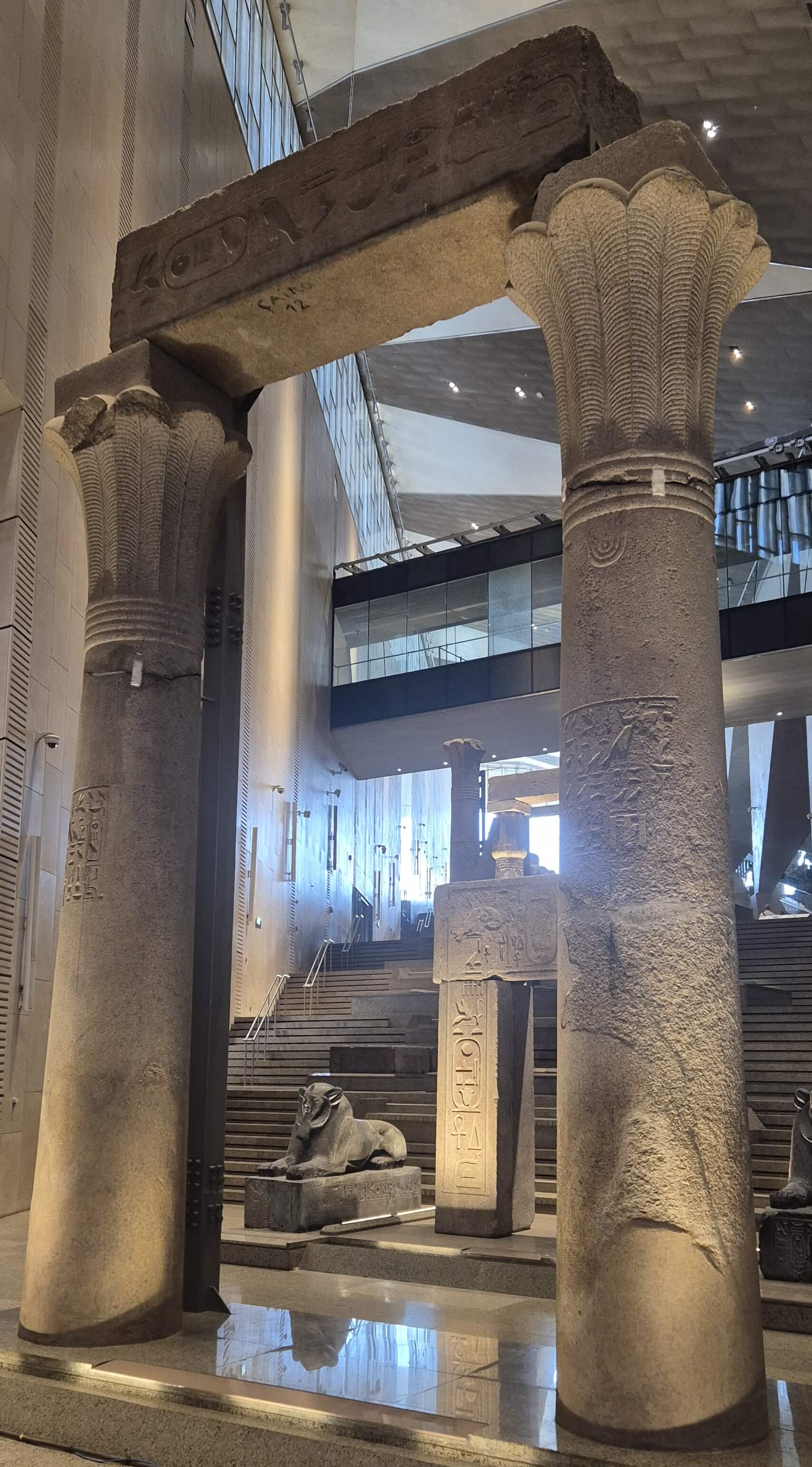
GEM 12312
Columns & Lintel of King Sahure
Before you stand two columns and a lintel from the mortuary temple of King Sahure, a prominent ruler of Egypt’s 5th Dynasty, who reigned during the Old Kingdom around 2470–2445 BCE. These architectural elements are not just structural remnants—they are part of one of Egypt’s earliest and most innovative royal temples, located in Abusir, near modern-day Cairo.
Sahure’s reign marked a significant transition in temple design, combining older traditions with emerging features that would shape Egyptian mortuary architecture for centuries. His temple complex once contained sixteen palm-shaped columns, of which the two before you are fine examples, crafted from red granite and originally forming part of a colonnaded courtyar ... اكتشف المزيد مع البريميوم!
اكتشف القصة الكاملة لهذا الأثرقم بالترقية للبريميوم للوصول إلى الوصف الكامل، الأدلة الصوتية، والمحتوى الحصري لجميع القطع الأثرية.استمتع بالوصول الكامل إلى الصوت والوصف لأهم القطع الأثرية في المتحف الكبير بسعر 1.99 دولار
تبحث عن قطعة أثرية أخرى؟